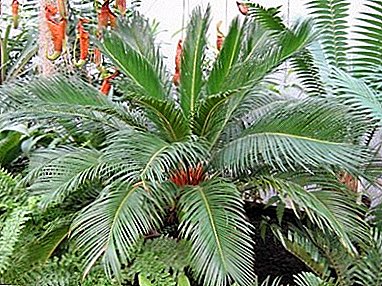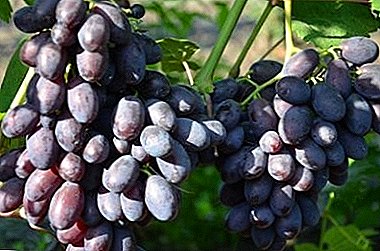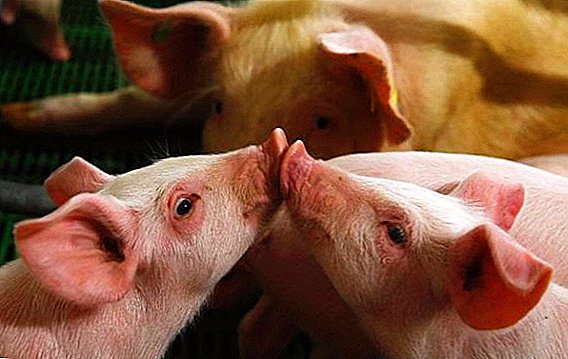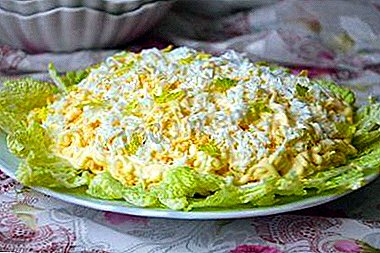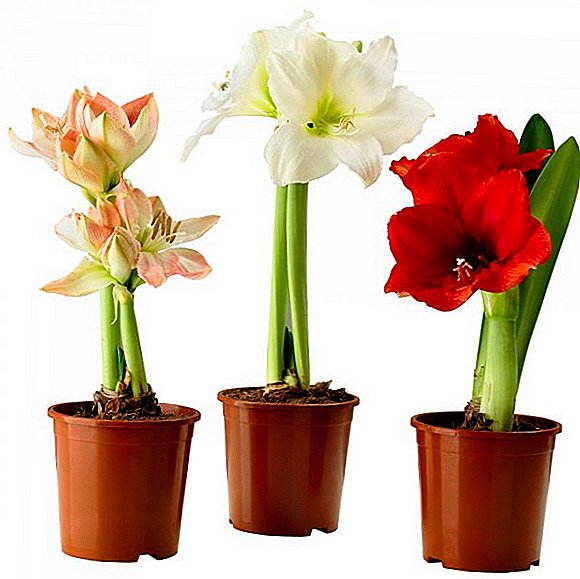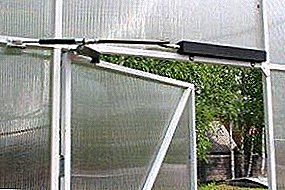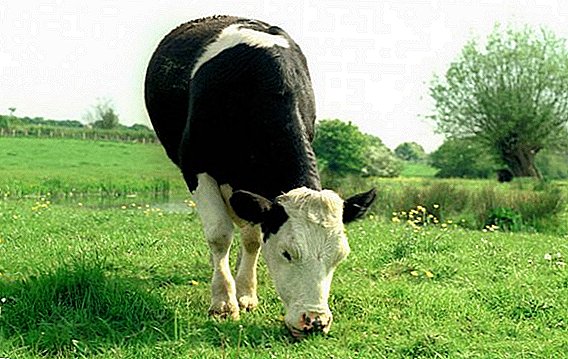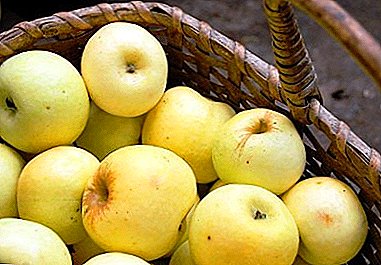
Apple tree Antonovka ordinary easily recognizable by a very specific pleasant persistent aroma.
Her sweet and sour flesh possesses sufficient juiciness, and a smooth, rich yellow skin is attractive in appearance.
Up to 90% yield is suitable for fresh sale. Suitable for the preparation of all types of winter billets, tasty in the peeled form.
Further in the article - description of the variety Antonovka ordinary and a photo of its fruits.
What kind is it?
 Antonovka ordinary - winter (late autumn) high-yielding and late blooming variety with good winter hardiness.
Antonovka ordinary - winter (late autumn) high-yielding and late blooming variety with good winter hardiness.
Aphrodite, Babushkino, Orlik, Orlovskoye Polesye and Winter Beauty also belong to winter varieties.
The period of mass achievement of technical maturity by the fruits, the length of the storage period of the removed apples (keeping quality), depends on the geographical latitude of the tree growing area.
Sort self-infertile. The best yields will provide a neighborhood with different species: Anise, Autumn Striped, Welsey, Pepin Saffron.
Description variety Antonovka ordinary
It is difficult for a non-specialist to look at Antonovka's saplings, that these frail specimens eventually turn into strong spreading trees, well tolerated fierce Russians frost and strong winds.
Saplings, young trees have oval crown. Over time, it "served" in breadth and becomes sphericalslightly flattened at the top.
The main skeletal branches initially grow parallel to the trunk, and eventually spread out to the sides. Branching is abundant. The main fructification falls on branches older than three years. Cranked shoots, faceted in section.
 The color of the trunk, the bark on the branches over two years old is warm brown.
The color of the trunk, the bark on the branches over two years old is warm brown.
The color of the foliage, which is located on short petioles with broad-lancet implementers, is bright green, the shape is oblong-ovate.
The edges are serrate-crenate, serrated. The surface of the sheet is moderately wrinkled.
Large flower buds are white with a barely noticeable pinkish tint, growing to the edge of the petals. Petals have an oblong shape, fit to each other, forming an elegant "saucer". Pestles are not scaled, stigmas above the anthers.
Ripe apples have a yellow color with a slight green tint, pronounced "Antonov" flavor. Fruit medium or large (up to 300 g), slightly ribbed.
In the process of maturation, the pleasant smell of the fruit increases, the green ebb completely disappears. The peel is smooth, only the surface of the funnel and a small area outside of it with "rust".
Apples growing in the center of fruit bags have a rounded shape, slightly flattened from the top and bottom sides, and located at the side - more elongated. The lower part of the fruit is somewhat upper already.
 Calyx closed, "recessed" in a small fold saucer. Podchashechnaya tube has a back-conical or funnel shape.
Calyx closed, "recessed" in a small fold saucer. Podchashechnaya tube has a back-conical or funnel shape.
When cutting a matured Antonovka ordinary, it is clear that:
- the flesh is yellowish,
- dense,
- juicy,
- axial cavity barely visible,
- the connection of the axial cavity with the seed chambers is hardly visible.
IMPORTANT! Fruits firmly hold on the branches until full maturity, if the trees are not experiencing a deficit of moisture.
A photo






Breeding history
The records of the Antonovka common speaker are listed as a variety bred a few centuries ago by Russian folk breeders by the long-term cultivation of descendants of wild forest apple trees.
On its base, modern specialists obtained several popular varieties of the variety (A. sweet, A. white, A. half-foot) and individual varieties formed by crossing Antonovka vulgaris with other varieties of apple trees (Bogatyr, Cherry, Imrus, Orlov, Friendship of Peoples).
Growing region
 Regions from where the variety has spread - Tula and Kursk provinces.
Regions from where the variety has spread - Tula and Kursk provinces.
Today he is bred in Oryol, Penza, Bryansk, Moscow, Kaluga, Lipetsk, Ryazan, Tula gardening farms, in "cold" regions of Ukraine, Belarus.
Record keeping quality of fruits of Antonovka ordinary (before spring) is manifested in apples obtained from trees from regions with moderately warm summers and cold, snowy winters.
At the same time, the quality of storage conditions also affects the duration of the shelf life of the fruit.
In these regions, apple varieties are successfully grown: Melba, Idared, Granny Smith, Anis Sverdlovsk and Lobo.
Yield
Separate mature trees are able to give up to a ton of fruit for the harvest. The average of most apple trees is 300-400 kg.
The largest fruits, most often formed only on young trees, weigh no more than 340 g. Typical apple weight -150-200
The first significant fees Antonovka accounted for 5-7 year after successfully completed budding.
 The time of the massive apple harvest is September - if there were a lot of hot days in the summer.
The time of the massive apple harvest is September - if there were a lot of hot days in the summer.
With a moderately hot summer, fruit picking starts at october, thereby getting the opportunity to keep apples with excellent consumer appeal until the middle of winter, and even before the beginning of spring.
High yields can also boast varieties: Persianka, Korey, Elena, Jonagold and Bratchud.
Storage
Basic recommendations to extend the shelf life of the plucked apples without losing their presentation and taste:
Apples are forbidden to shake off the tree, as this will lead to rapid rotting of the fruit in places of impact.
Fruits for long term storage should be removed just before they reach the technical maturity.
When laying apples in the shipping container, avoid striking the fruit against each other or against the walls of the container.
Before being sent to the cellar, warehouse or storage, apples are calibrated, get rid of the fruit, having even the slightest damage to the skin.
 Sorted fruits are stored in wooden, plastic boxes with chips or wrapped in a separate sheet of paper, tracing paper.
Sorted fruits are stored in wooden, plastic boxes with chips or wrapped in a separate sheet of paper, tracing paper.
The optimum air temperature in the room where apples are stored: 1.4-1.8 ° C.
The presence of the existing ventilation system increases the keeping quality of the fruit.
Planting and care
Bookmark young apple orchard perform in early spring or autumn. If the region is different in dry summer, then the second option is the time of planting seedlings.
Before the trees reach three years of age, regular hilling should be performed. For better survival of the representative of the variety, the soil around the tree can be mulched with dung.
This will help to keep the optimum moisture level around the roots, which is very important for Antonovka, ordinary any age.
Antonovka saplings are quite expensive, since the yield of products of good commercial quality, suitable for laying a young garden, is less than half of the volume of the material that was planted in the ground and grafted.
 When planting grown / acquired seedlings, the depth of the holes, the soil mixture and fertilizers are the same as for other varieties.
When planting grown / acquired seedlings, the depth of the holes, the soil mixture and fertilizers are the same as for other varieties.
Given the physical weakness of annual and biennial seedlings, when planting should be sure to install a reliable long peg near the treeand then bind the apple tree to it.
Before placing the seedling in the finished pit, its bottom should be enough to moisten, pouring no less than a bucket of water.
Regular visual inspection of crowns of young trees, allows timely identification of weak branches, which must be removed.
This will allow the power of the tree to form a healthy crown of the desired shape.
Antonovka vulgaris will produce abundant harvests from fruits that are not particularly large, but also from old fruits, provided:
- growing in the northern regions
- on the ground areas with good watering.
If you wish to receive large fruits for sale in the first month after removal, the soil around the trees should be kept under a black steam.
Diseases and pests
 Apple-tree Antonovka ordinary is resistant to scab and transfers this quality to new varieties when crossed.
Apple-tree Antonovka ordinary is resistant to scab and transfers this quality to new varieties when crossed.
Immune to other diseases in typical agricultural practices (timely loosening of the soil, seasonal whitewashing, protection of the trunks from rodents, periodic spraying with chemicals, taking into account existing threats).
For the prevention of crop damage by moth and other species of caterpillars, use:
- chlorophos and karbofos,
- pure entobacterin
- a mixture of entobacterin with chlorophos.
Do not neglect the prevention of the most common pests of apple orchards, for example, the Codling moth, the fruit marmot, the mining moth, silkworms, haws.
Despite a significant number of new winter-hardy varieties of apple trees, Antonovka vulgaris continues to be grown in private and peasant gardens.
Resistant to damage typical for apple trees, without suffering for itself, enduring harsh Russian winters, it is a profitable object of care, which will respond to the abundant harvest of attractive yellowish-green large fruits with a charming aroma.
Watch the video about the varieties of apple Antonovka


